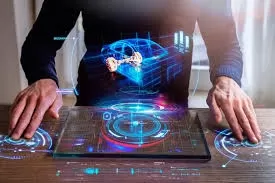AI and Spatial Computing: The Future of Human-Computer Interaction
The digital revolution is accelerating, and at the heart of this transformation lies Artificial Intelligence (AI) and Spatial Computing. As technology giants like Apple, Google, Meta, Microsoft, and Tesla battle for dominance over this new frontier, the stakes have never been higher. Spatial Computing is set to redefine how humans interact with digital systems, bridging the gap between the physical and virtual worlds.

In this blog, we will explore the evolution of spatial computing, its implications for AI, and the challenges of privacy, security, and decentralization in the future of technology.
What is Spatial Computing?
Spatial Computing is a next-generation technology that allows digital systems to understand and interact with the physical world. It enables devices, machines, and AI-powered entities to:
✅ Recognize real-world objects and environments
✅ Use sensors, cameras, and AI to process surroundings
✅ Provide augmented and mixed reality experiences
✅ Enable natural interaction through gestures, voice, and movements
While Apple’s Vision Pro brought mainstream attention to the term in 2024, spatial computing extends beyond augmented reality (AR) and virtual reality (VR). It encompasses:
- Industrial automation
- Autonomous vehicles
- Robotics and Androids
- Metaverse applications
- AI-driven smart cities
This shift is creating a digital layer that blends seamlessly with the real world, allowing AI-powered machines to interact, navigate, and respond contextually.
The Role of AI in Spatial Computing
Artificial Intelligence is the driving force behind Spatial Computing. Without AI, spatial computing is simply a collection of sensors and cameras. AI enables machines to:
What's Your Reaction?

















